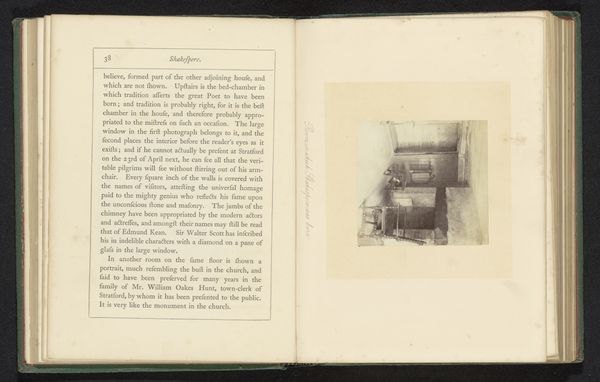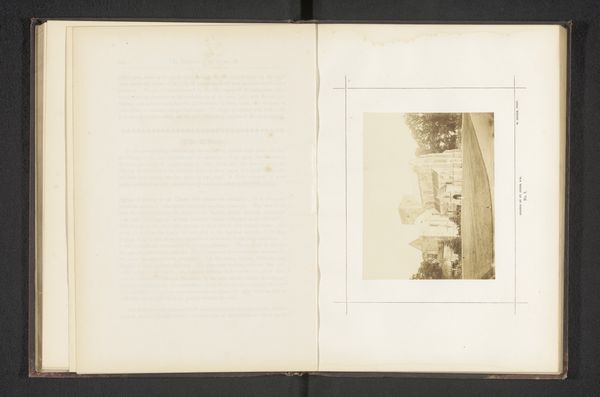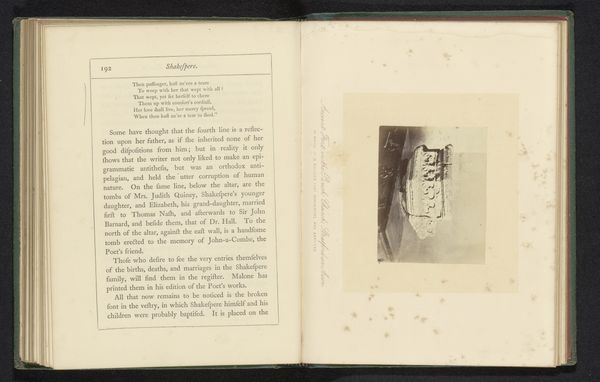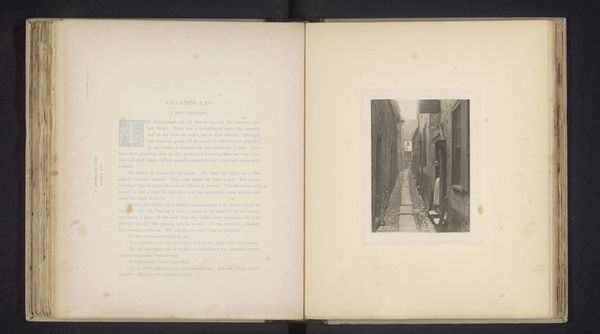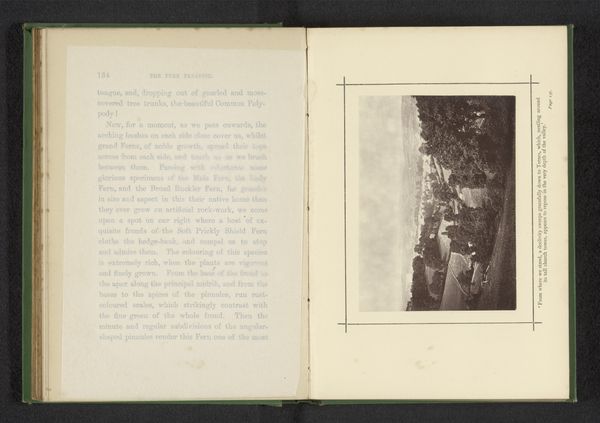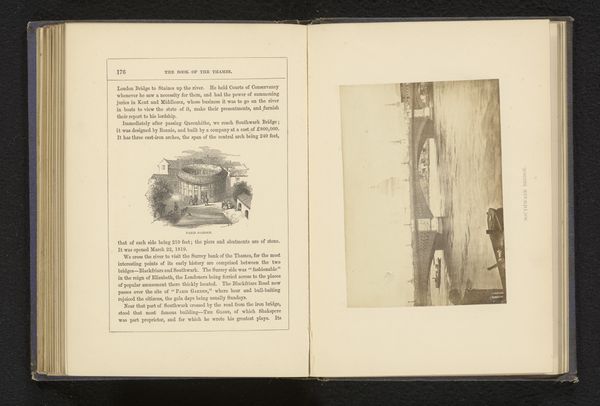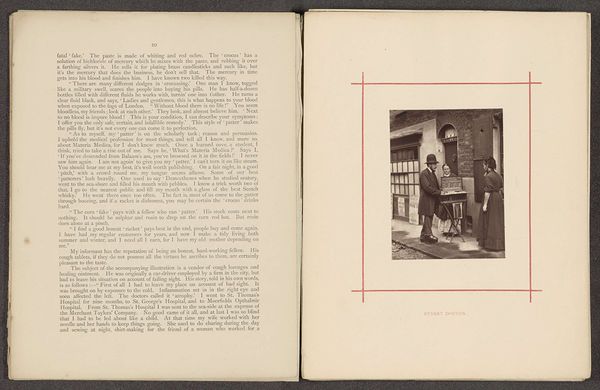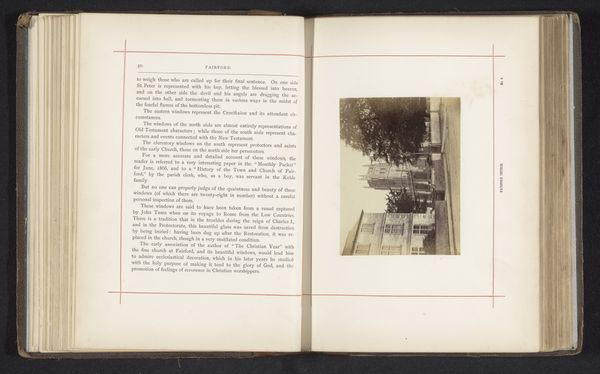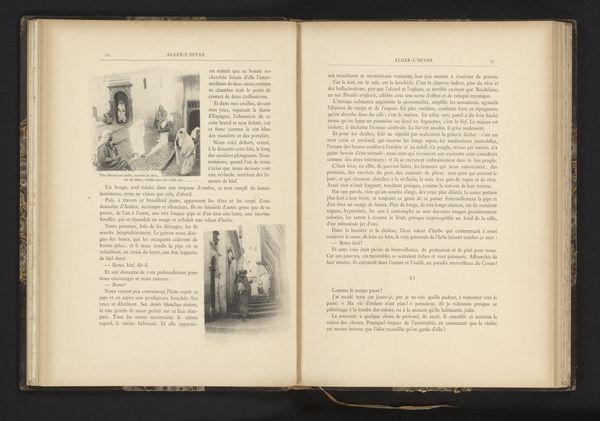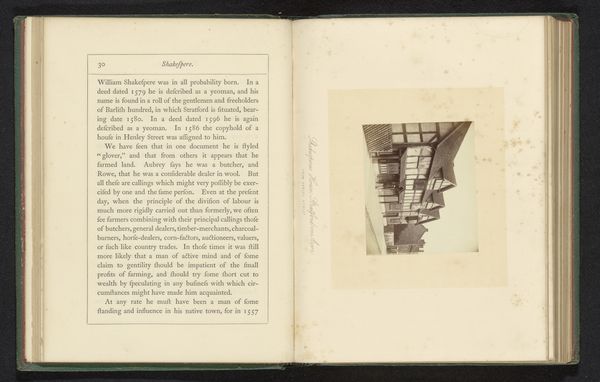
print, photography, gelatin-silver-print
# print
#
landscape
#
photography
#
gelatin-silver-print
#
history-painting
Dimensions: height 82 mm, width 79 mm
Copyright: Rijks Museum: Open Domain
Curator: What strikes me most immediately is the almost ghostly presence embedded in this monochromatic composition. Editor: Ah, you're responding to that sepia tone! For our listeners, this gelatin-silver print, taken sometime before 1864 by Ernest Edwards, offers a glimpse into "Living room in Shakespeare's house." It’s like a landscape—of the interior. Curator: Precisely. Look at the symbolic weight of this space—the hearth, for example. It's more than a functional element; it represents the heart of the home, warmth, family, and, by association, the genesis of Shakespeare’s own creative fire. The domestic sphere birthing a literary giant. Editor: Formally, observe how Edwards utilizes the subtle gradations of light to structure the composition. Notice the placement of the furniture and its textural rendering! Those details, combined with the sharp contrasts, suggest both depth and confinement. Curator: The confinement speaks volumes. Consider the cultural significance of pilgrimage, of venerating spaces associated with figures who shaped our collective consciousness. This isn't just a room; it's a site imbued with layers of meaning and expectation. Editor: Though it's also worth observing the slightly soft focus here, that haze gives it that dreamy quality of memory. I wonder if Edwards was using specific darkroom manipulations or even posing to create this. There's something artificial about its appearance. Curator: Interesting… and perhaps it reflects the artificiality inherent in idealizing the past. We yearn for a tangible connection to historical figures, often romanticizing their origins. This image feeds that desire, offering a glimpse into the intimate world where genius supposedly took root. But do we risk flattening out historical complexity by overly relying on symbols like "home"? Editor: Absolutely, we risk aestheticizing the material history and the more practical—dare I say—"boring" origins of how domestic settings operated, so that they become subsumed within legend. On closer look, this space seems stripped to only essential elements. Is it a landscape, as noted in its genre, or is it simply another exercise in controlled presentation? Curator: I agree… that's also one aspect of how photographs become venerated and sentimental: through stripping context away. Ultimately, whether we find reverence or manufactured sentimentality in this print, its symbolism allows us a kind of access to this specific piece of literary history. Editor: And the controlled tonality offers a certain aesthetic order. A delicate, silvery experience that rewards, or withholds, exactly how you view this icon.
Comments
No comments
Be the first to comment and join the conversation on the ultimate creative platform.
